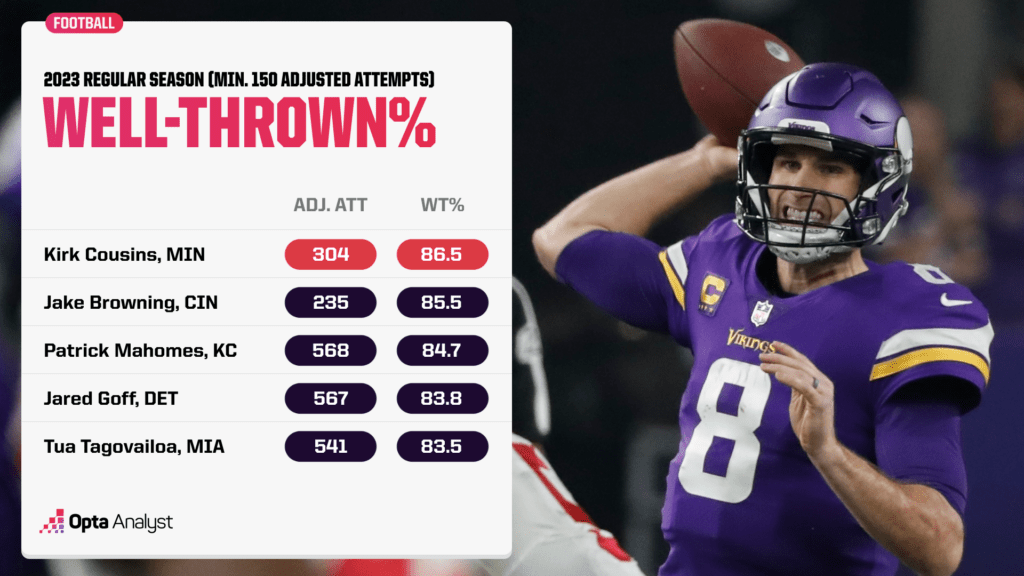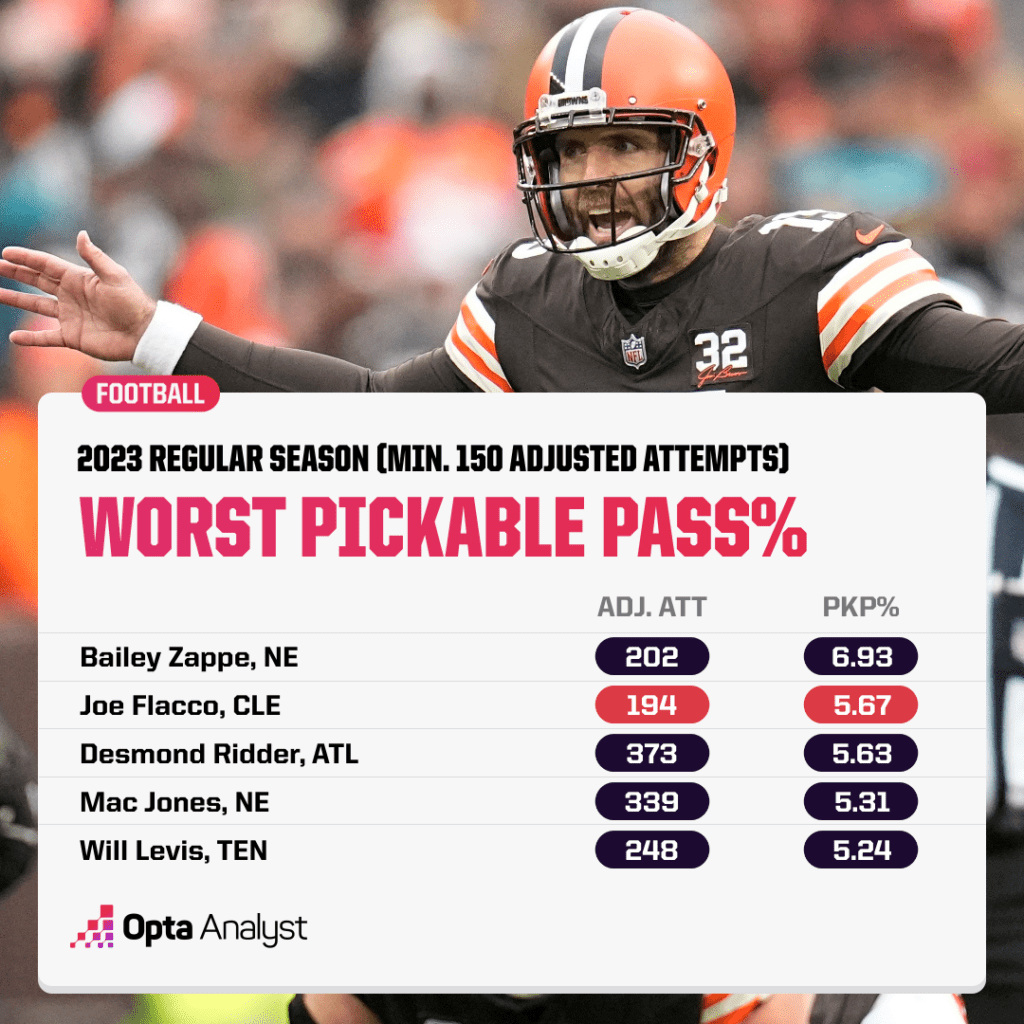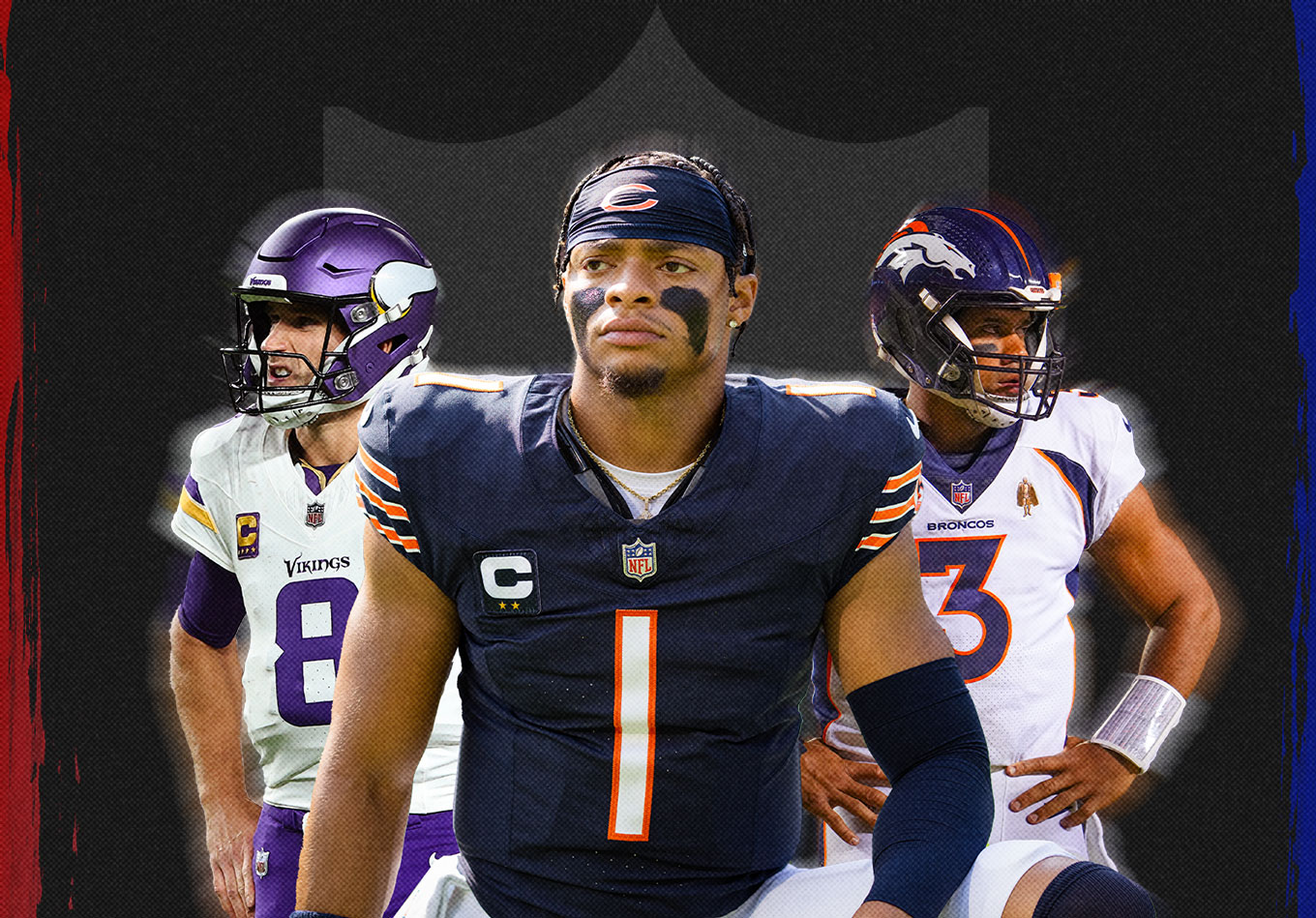The most sought-after quarterbacks of the NFL offseason are the ones who will only be available to teams with early draft picks.
Most of the NFL’s QB-needy teams won’t have a chance to add Caleb Williams, Drake Maye, or Jayden Daniels without paying a trade price that most will deem too high.
What are those teams to do? Go shopping elsewhere, of course.
Ahead of free agency’s opening on March 13, the market figures to feature five quarterbacks who either have extensive starting experience or whose 2023 performance could make them an attractive starter for the right team.
Some will move by way of trade, and others will change teams as free agents. One or two might even be good enough to move the needle for a playoff team looking to become a real contender.
Here’s our ranking of the five most interesting veteran QBs of the 2024 offseason.
1. Justin Fields, Chicago Bears
Last year, the Bears hung onto Fields and offloaded the No. 1 pick in the NFL Draft and the chance that came with it to draft a new franchise quarterback. This year, the Bears haven’t tipped their hand, but Fields is a year closer to no longer being on his rookie contract and still hasn’t eliminated doubt about his potential – and the Bears hold the first pick once again.
If they do like a rookie, they will probably rather have five years of him at a cut rate than Fields for another two before his free agency. But most teams aren’t in the Bears’ draft position, and several would find Fields to be a prize.
His overall numbers did not improve from his sophomore season in 2022, but Fields showed enough flashes of brilliance (and put up with a lousy enough offense around him) that plenty of football people still think there’s something there. Fields’ 81.3 well-thrown percentage was a tick better than league average, his 3.79% pickable pass rate was just a tick worse, and he was by far the league’s most proficient scrambler when plays broke down.
Fields averaged 6.7 yards when he took off running. Three years in, Fields still has a wide, wide range of plausible outcomes for his career. Someone will bet on him.
2. Kirk Cousins, Minnesota Vikings
Cousins only played eight games last year before he tore his Achilles, but they were eight good games. As he often has during his career, Cousins posted an attractive standard stat line: 7.5 yards per throw, 18 touchdowns, five interceptions, and a 103.8 rating with nearly 300 yards per game.
It was standard Cousins fare; he was one of the better QBs in the NFL, albeit not a world-beating star. That might undersell how good he was at 35 years old, though. Cousins led the league in well-thrown percentage (86.5) and was fourth in expected completion percentage (76).

It may not sound appetizing to make a big financial commitment to a 36-year-old passer coming off a torn Achilles, but Cousins’ track record is strong and enough teams need help. He’s going to get a big chunk of change, and the big questions are for how many years and whether he’ll keep living in the Twin Cities.
3. Russell Wilson, Denver Broncos
The good news is that Wilson was much better in his second year in Denver than he was in his first. The bad news is that he was still worse than he ever was as a Seattle Seahawk.
And the worst news is that coach Sean Payton seems to harbor an intense disrespect for Wilson, whom he benched late in the season to avoid a contract trigger. That felt like a bridge-burning, and now Wilson is a prime trade candidate even though his enormous contract makes the salary cap math of a deal complicated.
What’s still appealing about Wilson at this point in his career? With his contract, not a lot. But Wilson has a few points in his favor to suggest that he might have another year or two of competent play in him. The biggest is a 2.65 pickable pass percentage that beats every other veteran QB on this list and placed Wilson ninth among starting quarterbacks. His 80.7 well-thrown percentage was almost exactly league average, his 75.3% expected completion rate just above it.
Wilson didn’t air the ball out much in the Rocky Mountain air, with 7.5 average air yards – one of the league’s lower totals. The basic value proposition with Wilson at this stage is simple: Cap issues notwithstanding, it could be worse.
4. Joe Flacco, Cleveland Browns
Flacco’s absurd comeback has been well documented. Sitting at home until mid-December, he made five starts for the Browns after signing off the street. He won four of them and even slung it around a bit in a playoff loss to the Houston Texans.
Flacco was 38 and won the NFL’s Comeback Player of the Year honor. Ostensibly, that’d be a great way for the veteran to go out. But Flacco sounds like a man who still wants to play football, and someone will probably give him that opportunity given his work in Cleveland.
Going into the season with Flacco as a starting quarterback would be either malpractice or a sign that someone has gone horribly wrong. But he didn’t play like an old man down the stretch. Flacco’s 8.9 average air yards were sixth in the league, and his 77.8% clip of well-thrown passes was below average but ahead of the likes of C.J. Stroud and Matthew Stafford.
Maybe there’s some life left in the old man’s arm. Then again, Flacco’s 5.67% pickable pass rate was enormous and led to him throwing eight interceptions in his five regular season starts. Flacco’s free agency will certainly be interesting, because there are reasons to run away from signing him but also an allure to bringing him in.

5. Ryan Tannehill, Tennessee Titans
Tannehill will be 36 this season and appears to be on his last legs. After enjoying a career renaissance in Tennessee in 2019 and ‘20, he declined precipitously in 2021 and then again in 2023. The first drop off coincided with his Titans offensive coordinator, Arthur Smith, leaving to become the head coach in Atlanta. Now that Smith is the offensive coordinator for the Pittsburgh Steelers, Tannehill has become an oft-speculated addition to the Steelers QB room, where he’d press the disappointing Kenny Pickett.
Tannehill still managed an 81.9 well-thrown percentage last year on 8.1 average air yards – both better-than-average marks. But 4.52% of his passes were interceptable and Tannehill continued to become less and less of a running threat after making that a useful part of his game during his early years in Nashville.
You could squint and see something left in Tannehill; the Titans didn’t have a good pass-catching group, and the 4.52% drop rate that Tannehill’s receivers saddled him with was sixth highest in the league. (One of the only QBs “ahead” of him on that list was his replacement, Will Levis.)
The best hope for Tannehill is that he winds up in an offense that can scheme receivers open and then have them catch the ball. But isn’t that true for everyone?
Check out our MLB, NBA and NFL coverage, as well as our college basketball picks. Follow us on X and Instagram for more!
